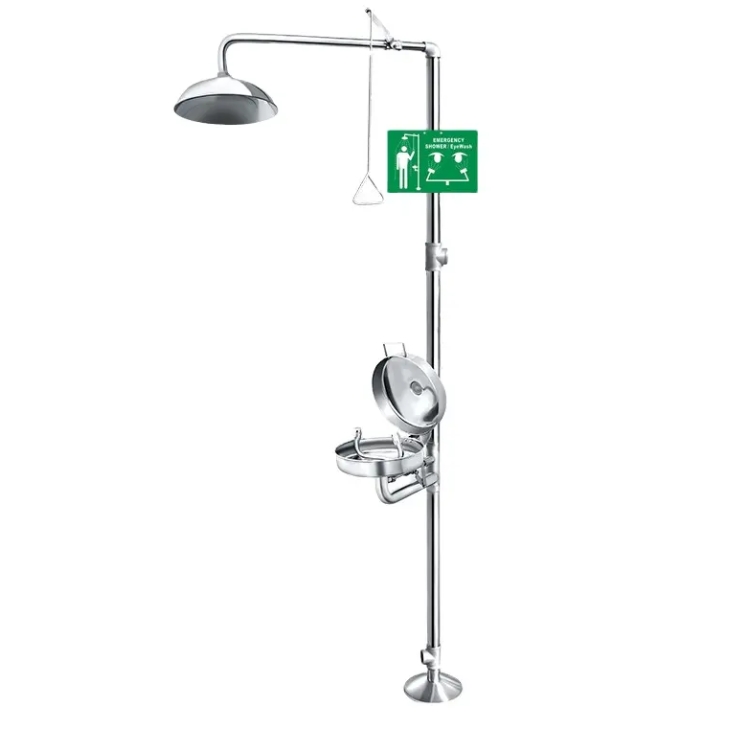Table of Contents
What is an Eyewash Station Used For?
In any workplace where employees are exposed to chemicals, dust, debris, or other eye irritants, an eyewash station is a crucial safety feature. Eyewash stations provide immediate first aid to individuals who need to flush harmful substances from their eyes, reducing the risk of serious eye injuries. Knowing how and when to use an eyewash station can be life-saving in environments where eye exposure is a common hazard.
The Primary Purpose of an Eyewash Station
The main purpose of an eyewash station is to provide a quick and accessible way to flush contaminants out of the eyes in an emergency. This equipment is designed to deliver a gentle stream of water to the eyes, removing harmful substances before they cause lasting damage. Eyewash stations are essential for maintaining workplace safety, especially in environments where employees are at risk of exposure to:
- Chemical splashes
- Dust and debris
- Corrosive substances
- Biological hazards
When used correctly, eyewash stations can help prevent serious eye injuries by reducing the contact time between the eyes and the harmful material.
When Should an Eyewash Station Be Used?
Eyewash stations should be used immediately following any incident where an eye exposure has occurred. Time is of the essence when it comes to treating eye injuries, as delayed flushing can increase the risk of irreversible damage. Here are some situations when an eyewash station should be used right away:
- Chemical Exposure: If any kind of chemical comes into contact with the eyes, immediate flushing is crucial. Certain chemicals, particularly acids and alkalis, can cause severe eye damage in seconds, so quick access to an eyewash station is critical.
- Dust or Debris Contact: In environments like construction or manufacturing, where dust and small particles may enter the eyes, an eyewash station provides an effective way to wash away these irritants.
- Biological Hazards: In healthcare or laboratory settings, exposure to infectious agents may also require the use of an eyewash station to remove contaminants.
Types of Eyewash Stations
Eyewash stations come in various forms, each suited to different environments and needs. The type of station installed will depend on the nature of hazards present in the workplace.
Plumbed Eyewash Stations
These are fixed stations connected to the building’s water supply. They provide a continuous flow of water and are ideal for workplaces with permanent hazards, like laboratories and industrial facilities.
Portable Eyewash Stations
Portable units are self-contained and don’t require plumbing. They are often used in construction sites or other temporary work areas. These stations provide flexibility for environments where permanent installation isn’t feasible.
Combination Stations
Combination stations include both an eyewash station and a shower, which is useful in areas where both eye and body exposure to hazardous materials are likely.
How to Properly Use an Eyewash Station
To use an eyewash station effectively, employees should be trained to follow these steps:
Reach the Station Quickly
The eyewash station should be accessible within 10 seconds of the hazard area. Do not delay in seeking help.
Activate the Station
Start the flow of water by pressing the lever or activating the unit, depending on the model.
Hold Eyes Open
Keep both eyes open and allow the water to flush the eyes thoroughly. Use your hands if necessary to keep the eyelids open and ensure that water reaches all areas.
Flush for 15 Minutes
OSHA and ANSI guidelines recommend flushing the eyes for at least 15 minutes. Continue to hold your eyes open and let the water do the work of rinsing contaminants away.
Seek Medical Attention
Why Eyewash Stations are Essential for Workplace Safety
Eyewash stations are a vital part of a workplace’s first aid and emergency response. Beyond reducing the risk of eye injuries, they also help ensure compliance with Occupational Safety and Health Administration (OSHA) standards, which require that eyewash stations be available in areas where employees are at risk of eye exposure to harmful substances. Ensuring that employees know the location and use of eyewash stations is a key component of workplace training programs.
Maintaining Eyewash Stations
Proper maintenance is crucial for eyewash stations to function effectively. Regular inspection ensures that stations are always ready to use in case of an emergency. ANSI recommends:
- Weekly Checks: Ensure water flow, temperature, and cleanliness meet safety standards.
- Monthly Maintenance: A more thorough inspection should be conducted to check for leaks, blockages, and other potential issues.
- Annual Servicing: A full inspection of each station ensures long-term functionality and compliance.
Conclusion
Eyewash stations play a critical role in maintaining eye safety in workplaces where employees face exposure to chemicals, dust, or biological hazards. Understanding what an eyewash station is used for and ensuring that stations are properly installed, maintained, and accessible can significantly reduce the risk of eye injuries. By incorporating eyewash stations into workplace safety protocols, employers not only protect their workforce but also comply with essential safety regulations, creating a safer work environment for all.




